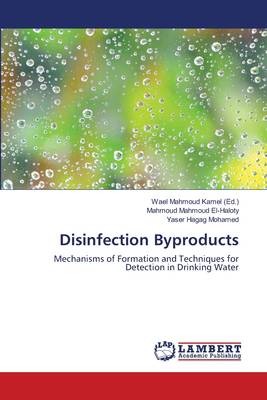
- Afhalen na 1 uur in een winkel met voorraad
- Gratis thuislevering in België vanaf € 30
- Ruim aanbod met 7 miljoen producten
- Afhalen na 1 uur in een winkel met voorraad
- Gratis thuislevering in België vanaf € 30
- Ruim aanbod met 7 miljoen producten
Zoeken
Disinfection Byproducts
Mechanisms of Formation and Techniques for Detection in Drinking Water
Mahmoud Mahmoud El-Haloty, Yaser Hagag Mohamed
Paperback | Engels
€ 54,45
+ 108 punten
Omschrijving
The EPA has established regulations which classify four groups of disinfection byproducts including Trihalomethanes, Haloacetic acids, Haloacetonitriles and Ethylene dibromide in association with Dibromochloropropane. The EPA requires public water systems limit these byproducts to specific levels. Disinfection Byproducts in Drinking Water: Formation, Analysis, and Control pull all the information together to provide a needed organized presentation of disinfection byproduct analysis, formation, and control. The author begins with an introduction to all disinfection byproducts (DBPs), including their nomenclatures, molecular structures, and formation. He discusses the effects of various water quality parameters on the formation and stability of DBPs in drinking water. He added new innovative simple methods to detect these DBPs with highly advanced techniques. The book explains hazards of these DBPs on the different biological functions showing target of each individual byproduct in human body. It explains mechanism of the different chlorinated compound in alteration of the biological process and hence producing different cancer tumors.
Specificaties
Betrokkenen
- Auteur(s):
- Uitgeverij:
Inhoud
- Aantal bladzijden:
- 88
- Taal:
- Engels
Eigenschappen
- Productcode (EAN):
- 9783659503054
- Verschijningsdatum:
- 21/12/2013
- Uitvoering:
- Paperback
- Afmetingen:
- 150 mm x 220 mm
- Gewicht:
- 141 g

Alleen bij Standaard Boekhandel
+ 108 punten op je klantenkaart van Standaard Boekhandel
Beoordelingen
We publiceren alleen reviews die voldoen aan de voorwaarden voor reviews. Bekijk onze voorwaarden voor reviews.











